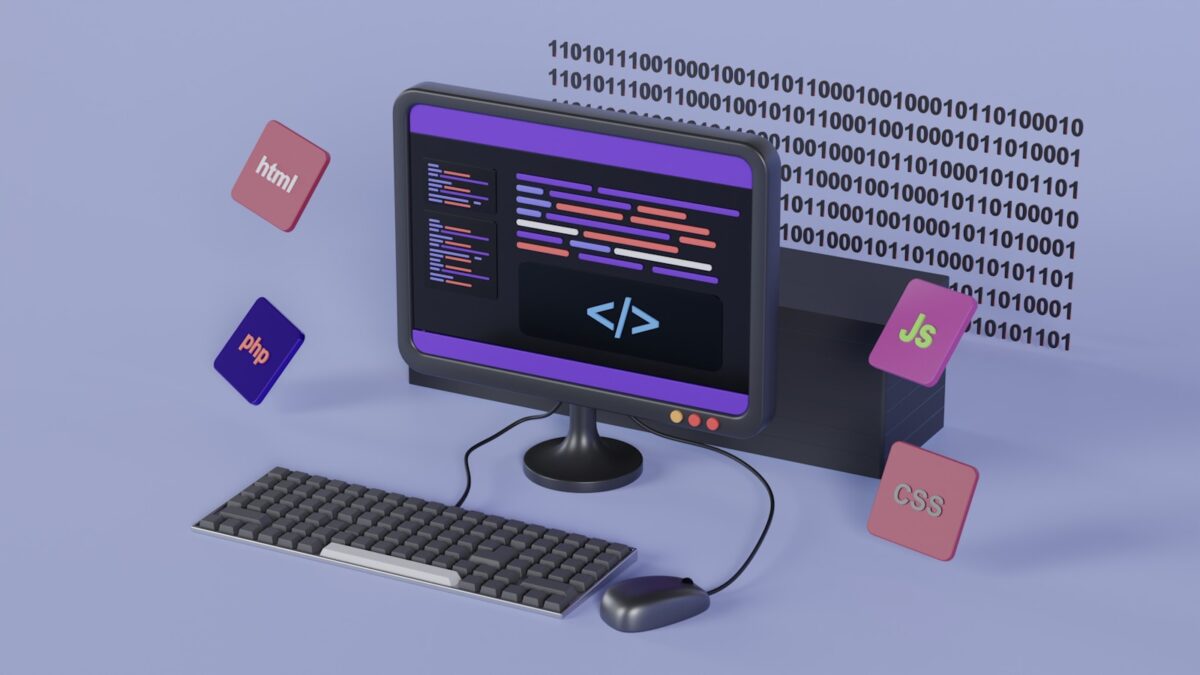
Technology assessment guide

Begin with quantifiable metrics that measure scalability to determine how well a system adapts under increasing workloads. Prioritize security protocols by analyzing encryption standards and vulnerability exposure to ensure robust protection against threats. This approach enables clear differentiation between alternatives based on concrete benchmarks rather than subjective opinions.
Use structured comparison matrices incorporating performance, cost-efficiency, and integration capabilities. Such frameworks facilitate objective ranking while illuminating trade-offs inherent in adopting novel solutions. Incorporate multi-dimensional analysis techniques including risk assessment and lifecycle evaluation to capture long-term impacts beyond immediate functionality.
Encourage iterative experimentation with innovative components through controlled pilot implementations. Collect empirical data on response times, error rates, and user feedback to refine hypotheses about system behavior. By systematically documenting findings, one constructs an evidence-based narrative guiding informed decision-making aligned with organizational goals.
Technology Assessment Guide
Start your evaluation by focusing on quantitative analysis methods that measure throughput, latency, and energy consumption. For instance, comparing consensus algorithms such as Proof of Work (PoW) against Proof of Stake (PoS) reveals distinct trade-offs in terms of security and scalability. PoS networks like Ethereum 2.0 demonstrate significant improvements in transaction finality times while reducing power usage by over 99% compared to traditional PoW chains.
When selecting educational materials, prioritize resources that provide detailed breakdowns of system architectures and protocol designs. Open-source repositories combined with peer-reviewed whitepapers offer invaluable insights into innovation trajectories and technical constraints. The Cardano project’s layered approach to settlement and computation exemplifies modular design principles that impact scalability and upgrade flexibility.
Comparative Frameworks for Blockchain Solutions
A structured comparison matrix is essential for understanding functional differences among decentralized platforms. Key parameters include transaction throughput (TPS), confirmation time, network decentralization degree, and smart contract capabilities. For example:
This kind of systematic juxtaposition aids in identifying technological strengths aligned with specific use cases or research goals.
The exploration of scaling methodologies remains a cornerstone topic within blockchain research circles. Layered protocols such as Lightning Network for Bitcoin or rollups on Ethereum illustrate off-chain processing techniques that significantly reduce mainnet congestion without compromising security guarantees. Evaluating the robustness of these solutions requires practical experimentation through testnets or sandbox environments.
Diving deeper into innovation pathways involves tracking protocol upgrades via official GitHub repositories and developer forums. Monitoring community discussions helps uncover emerging challenges related to interoperability, governance models, and cryptographic advancements like zero-knowledge proofs (ZKPs). These developments open avenues for experimental validation through simulation tools or cryptanalysis frameworks designed for academic scrutiny.
- Recommendation: Engage with diverse learning media – video lectures from blockchain conferences complement written technical analyses.
- Tactic: Construct hypothesis-driven case studies evaluating performance shifts pre- and post-upgrades on live networks.
- Aim: Develop critical perspectives by contrasting centralized cloud solutions with decentralized alternatives emphasizing resilience.
This methodical approach cultivates a nuanced understanding necessary for advancing both theoretical knowledge and applied expertise in next-generation decentralized systems.
Defining Technology Scope
Establishing a clear boundary for innovation evaluation requires a rigorous comparison of system components, protocols, and architectural models. This process involves pinpointing the extent of functionalities, performance metrics, and integration capabilities necessary to address specific use cases effectively. By delineating these parameters precisely, organizations can avoid resource dilution and target solutions that align with strategic objectives.
Security considerations must be integral to this demarcation since vulnerabilities often emerge from poorly defined operational limits. Including threat models and compliance requirements within the scope ensures that protective measures are scalable alongside the solution’s expansion. A thorough analysis of cryptographic standards and consensus mechanisms supports resilience against potential attacks while maintaining system efficiency.
Analytical Frameworks for Innovation Boundaries
A structured examination employs comparative frameworks that juxtapose emerging systems against established benchmarks in scalability and interoperability. For example, evaluating Layer 1 versus Layer 2 blockchain architectures reveals trade-offs between throughput capacity and decentralization levels. Such scrutiny informs decisions on which innovations merit inclusion based on their capacity to enhance existing ecosystems without compromising stability.
Case studies demonstrate that successful scope definition often hinges on modularity principles allowing incremental upgrades without overhauling entire infrastructures. The adoption of interoperable smart contract standards like ERC-4337 illustrates how clearly scoped enhancements enable seamless integration while preserving backward compatibility. These examples underline the importance of meticulous component-level analysis within the broader technological context.
Quantitative methods involving performance benchmarking provide objective data that refine scope boundaries further. Metrics such as transaction per second (TPS), latency, and fault tolerance rates furnish insights into scalability thresholds achievable by candidate solutions. Cross-comparisons between proof-of-stake and proof-of-work consensus protocols highlight distinct scalability-security trade-offs crucial for informed delimitation.
Ultimately, defining innovation parameters demands continuous iteration based on empirical findings gathered through prototyping and pilot deployments. Incorporating feedback loops facilitates adjustments aligned with evolving requirements and environmental constraints. This experimental approach nurtures confidence in selected scopes, fostering robust architectures optimized for both present functionality and future adaptability.
Data Collection Methods
Effective data gathering in blockchain and cryptocurrency analysis requires prioritizing security alongside robust mechanisms that ensure integrity and traceability. Employing decentralized oracles, for example, allows aggregation of off-chain data with cryptographic proofs, minimizing risks of manipulation. This approach enhances reliability in projects where external information impacts consensus, such as DeFi protocols leveraging price feeds.
Comparative evaluation of on-chain versus off-chain collection techniques reveals trade-offs linked to network scalability. On-chain methods offer transparency and immutability but often incur higher costs and latency due to block size limits and consensus delays. Conversely, off-chain approaches can process larger volumes rapidly, yet demand additional trust assumptions or security layers to prevent data tampering during transmission.
Innovations Enhancing Data Acquisition
Recent innovations include zero-knowledge proofs integrated into data submission processes, enabling verification without exposing sensitive details. Projects like Mina Protocol demonstrate this by compressing the entire blockchain state into succinct proofs, facilitating lightweight clients to collect verified data efficiently. Such advancements mitigate bandwidth constraints while preserving privacy and auditability.
An experimental method involves federated learning models distributed across nodes to analyze transactional patterns without centralizing raw datasets. This technique boosts analytical depth while respecting user confidentiality, presenting a promising direction for scalable monitoring tools that adapt dynamically to evolving threat vectors within decentralized networks.
Analyzing Impact Metrics in Blockchain Innovations
Effective evaluation of blockchain solutions requires precise metrics that quantify security performance, scalability, and operational efficiency. A structured examination of these parameters enables stakeholders to identify vulnerabilities and optimize network resilience. For instance, comparing transaction finality times across consensus algorithms such as Proof of Work (PoW) and Proof of Stake (PoS) provides critical insights into throughput capabilities and potential attack vectors.
Quantitative analysis should incorporate both on-chain data and external benchmarks to ensure comprehensive understanding. Tools measuring hash rate stability, node distribution, and cryptographic robustness contribute significantly to this process. In practice, Ethereum’s transition from PoW to PoS demonstrates how innovation can be measured through reduced energy consumption while maintaining equivalent security guarantees.
Key Indicators for Evaluating Blockchain Solutions
Security remains the foremost criterion when analyzing distributed ledger implementations. Metrics like the mean time between failures (MTBF), number of detected exploits, and resistance against 51% attacks serve as objective indicators. Case studies reveal that networks with decentralized validator sets typically exhibit higher fault tolerance, as shown in Cosmos’ Inter-Blockchain Communication protocol which leverages Tendermint consensus.
Performance metrics encompass transaction per second (TPS), latency, and confirmation speed. Comparative studies highlight significant differences; for example, Solana achieves TPS exceeding 50,000 due to its unique Proof of History mechanism but faces challenges in long-term uptime reliability. Such contrasts underscore the necessity for multidimensional comparisons rather than reliance on single-factor evaluations.
Innovation assessment benefits from monitoring upgrade frequency, codebase modularity, and community-driven enhancements. Open-source projects with active governance models often demonstrate accelerated feature deployment and rapid vulnerability patching. Polkadot’s parachain model exemplifies this dynamic by enabling heterogeneous chains to interoperate while preserving individual security postures through shared consensus.
A thorough comparison requires integrating these metrics within contextual frameworks reflecting use-case requirements such as DeFi platforms prioritizing low latency or supply chain applications emphasizing traceability. Incorporating empirical data alongside simulation models can reveal trade-offs inherent in architectural choices and guide informed decision-making toward sustainable advancement.
The exploration of impact quantifiers thus fosters analytical rigor by encouraging iterative testing under variable conditions. Researchers may experiment with synthetic workloads or adversarial scenarios to measure system robustness dynamically. This approach cultivates deeper understanding beyond static snapshots, nurturing confidence in emerging protocols’ ability to meet evolving demands without compromising foundational integrity.
Risk Identification Techniques
Effective identification of risks within blockchain projects requires a structured approach combining both qualitative and quantitative methods. One primary technique involves threat modeling, where system components are analyzed to uncover potential vulnerabilities affecting security, scalability, and operational integrity. For instance, examining consensus algorithms for attack vectors such as 51% attacks or double-spending enables targeted mitigation strategies based on empirical data.
Another method relies on scenario analysis, which simulates diverse failure modes and their cascading effects on network performance and user trust. In practice, this approach was instrumental in assessing the Ethereum network during its transition to Proof-of-Stake, helping identify risks related to validator incentives and finality delays. Such simulations offer measurable insights into innovation trade-offs inherent in protocol upgrades.
Systematic Techniques for Risk Discovery
Static code analysis plays a crucial role in detecting security flaws before deployment by scrutinizing smart contract source code against known vulnerability patterns like reentrancy or integer overflows. Tools like Mythril and Slither provide automated scanning that complements manual audits, reducing human oversight errors. Meanwhile, performance profiling assists in uncovering bottlenecks that limit scalability under high transaction loads.
- Fault tree analysis (FTA): Breaks down possible failures hierarchically to pinpoint root causes impacting network reliability.
- Delphi technique: Engages multiple experts anonymously to achieve consensus on emerging risks tied to novel blockchain applications.
- Historical data mining: Examines past incidents from public ledgers and bug bounty reports to predict probable future threats.
Integrating these methodologies enhances transparency by systematically cataloging risk factors linked with innovation cycles and infrastructure changes. This layered approach ensures no critical aspect–be it cryptographic weaknesses or governance vulnerabilities–is overlooked during evaluation phases.
The intersection of these techniques fosters a rigorous framework capable of adapting alongside innovative developments within distributed ledger environments. By prioritizing empirical evidence and iterative refinement through continuous monitoring, stakeholders can maintain robust defense postures while scaling infrastructure sustainably. Encouraging experimental validation at each phase cultivates an informed understanding of latent risks inherent to decentralized systems’ evolution.
Conclusion: Synthesizing Reporting Insights for Blockchain Innovation
Prioritize clarity and precision when conveying results from security evaluations within blockchain systems. Detailed comparative matrices that contrast cryptographic protocols or consensus mechanisms reveal nuanced vulnerabilities and resilience factors, enabling stakeholders to pinpoint optimization vectors effectively.
Integrating multifaceted analysis–encompassing code audits, threat modeling, and performance benchmarking–strengthens interpretative rigor. For instance, juxtaposing proof-of-stake against delegated alternatives through quantitative risk metrics exposes trade-offs in decentralization versus throughput, guiding strategic technology adaptation.
Key Technical Reflections and Forward Trajectories
- Security Metrics as a Decision Framework: Employ layered indicators such as fault tolerance thresholds, attack surface quantification, and cryptoeconomic incentives to provide actionable intelligence beyond surface-level diagnostics.
- Dynamic Comparison Models: Develop modular templates enabling iterative incorporation of emerging cryptographic primitives or scalability solutions; this fosters ongoing refinement rather than static snapshots.
- Transparent Communication: Utilize structured data visualizations alongside narrative synthesis to bridge technical depth with stakeholder comprehension–promoting informed consensus on innovation pathways.
- Future-Proofing Evaluations: Embed scenario-based simulations addressing potential quantum threats or adaptive adversarial tactics, ensuring longevity of proposed frameworks amid shifting technological paradigms.
The ripple effects of meticulously reported examinations extend beyond immediate project scopes–informing regulatory frameworks and catalyzing ecosystem-wide trust enhancements. As distributed ledger innovations intersect increasingly with real-world applications, cultivating robust analytical practices will underpin sustainable advancement in decentralized architectures.
This holistic approach encourages continuous experimental validation while nurturing critical thinking about emergent risks and opportunities. Readers are invited to adopt these methodologies as part of their investigative toolkit–transforming passive observation into proactive stewardship of blockchain’s evolving frontier.


